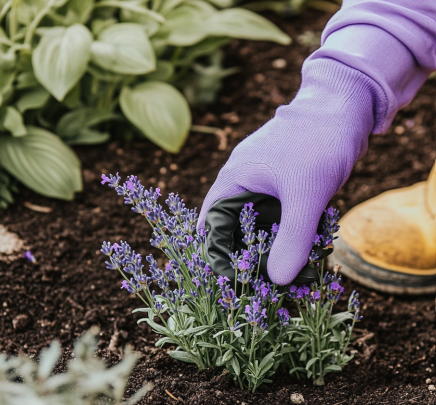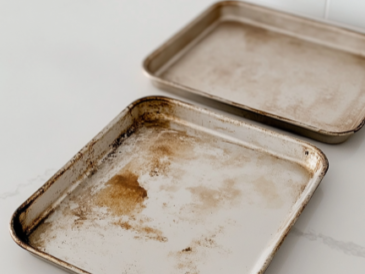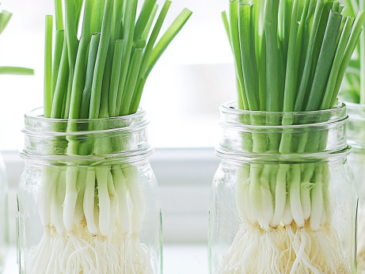Lavender hedges bring so much more than beauty to your garden. Their iconic purple blooms not only make for a stunning landscape feature but also offer numerous personal and environmental benefits. Whether you’re a gardening enthusiast or simply want to create a calming outdoor space, lavender hedges are the perfect solution. In this article, we’ll explore why lavender hedges are a must-have for any garden, how they positively impact the environment, and how you can plant and maintain your own. 🌱✨
🌍 The Environmental Impact of Lavender Hedges
Lavender is known for being eco-friendly and easy to grow. Unlike many plants that demand rich soil and frequent watering, lavender thrives in less-than-ideal conditions, making it a sustainable choice for gardeners. 🌾
💧 Water Conservation and Soil Health
Lavender is drought-tolerant, meaning it requires less water than many other plants. This characteristic not only helps conserve water but also makes lavender perfect for regions prone to dry spells. Its deep root system also improves soil structure and retention, which reduces erosion—a win for the environment! 🌿
🌼 Less Chemical Dependency
Lavender naturally resists pests, so gardeners don’t need to rely on chemical pesticides. Plus, its ability to grow in poor soil conditions reduces the need for fertilizers, further minimizing harmful environmental impact. By choosing lavender, you’re making an eco-conscious choice that benefits the local ecosystem. 🌎
💆♀️ The Health and Well-Being Benefits of Lavender 🌸
🌿 Natural Stress Relief
Lavender has long been celebrated for its calming and therapeutic properties. The essential oils derived from lavender blooms can reduce anxiety, promote relaxation, and improve sleep quality. Having a lavender hedge in your garden means you can easily access this natural remedy whenever you need it. Imagine stepping outside and instantly being surrounded by the soothing fragrance of lavender! 😌💜
🧘♂️ Gardening as Therapy
Planting and maintaining a lavender hedge isn’t just good for the environment—it’s good for your mental and physical well-being. Gardening is proven to reduce stress, improve mood, and provide a sense of accomplishment. With lavender’s minimal upkeep, you get all the benefits without the hassle. 🌱✨
🌼 Lavender Hedges: Aesthetic Appeal for Any Garden
Lavender’s vibrant hues—ranging from deep purple to soft pink—can elevate any garden space. Whether you want a striking border, an elegant focal point, or a calming path, lavender hedges fit the bill.
🌸 Versatile Garden Design
Lavender can be styled to suit various garden aesthetics, from rustic countryside charm to modern minimalism. Its evergreen foliage ensures year-round visual interest, and its long-lasting flowers provide a pop of color that other plants can’t compete with. 🌷✨
🐝 Attracting Pollinators
Lavender isn’t just eye candy for humans—it’s a favorite of bees, butterflies, and hummingbirds. By planting a lavender hedge, you’re supporting biodiversity and creating a haven for these essential pollinators. 🌼🐝 Your lavender hedge becomes a key player in maintaining a healthy, thriving garden ecosystem.
🌿 A Step-by-Step Guide to Planting and Caring for Lavender Hedges
Now that you’re convinced of lavender’s many benefits, it’s time to learn how to plant and care for your own lavender hedge. While lavender is low-maintenance, there are a few crucial steps to ensure its long-term success. Let’s dive into the details! 🔨🌱
🌱 Choosing the Right Lavender Variety
When selecting lavender for your hedge, it’s essential to choose a variety suited to your climate and garden conditions.
- English Lavender (Lavandula angustifolia): Best for cooler, temperate climates, offering a classic, sweet fragrance.
- French Lavender (Lavandula dentata) and Spanish Lavender (Lavandula stoechas): These varieties thrive in warmer, dry climates and add a unique twist to your garden design with their ornamental, butterfly-like blooms.
🌿 A quick tip: Make sure to research and choose a variety that matches your climate for the best results!
🏞️ Preparing the Soil and Planting Site
Lavender loves well-draining soil and full sunlight. If your garden has heavy clay soil, you may need to amend it with sand or gravel to enhance drainage. 🌞
- Clear the Area: Remove any weeds and debris from the planting site.
- Spacing: Dig holes 12-18 inches apart, depending on the mature size of your chosen variety.
- Planting: Water each plant thoroughly before placing it in the hole. Backfill the hole with soil and firm it gently around the roots.
💧 Watering and Maintenance
While lavender is drought-tolerant, newly planted hedges need regular watering to establish strong roots. Once established, you can reduce watering, as lavender thrives in dry conditions.
- Pruning: Annual pruning after the blooming season keeps the hedge looking tidy and encourages new growth.
- Air Circulation: Ensure proper spacing to promote airflow, especially in humid regions, to avoid fungal diseases.
🛠️ Troubleshooting: Common Challenges and Solutions
- Over-watering: Lavender dislikes soggy soil. Make sure you’re not over-watering, and ensure that the soil drains well.
- Humidity Issues: In humid climates, space your plants farther apart to increase airflow and reduce the risk of fungal infections.
- Poor Drainage: If your soil doesn’t drain well, consider using raised beds or pots to grow lavender successfully. 🪴
✂️ Harvesting and Practical Uses of Lavender
Lavender offers more than just a pleasant scent—it’s a versatile herb that can be used in a variety of ways.
🌸 How to Harvest Lavender
Harvest lavender when its flowers are in full bloom for the best fragrance. The ideal time is in the morning after dew has dried. Simply cut the stems and hang them upside down to dry.
🛁 Creative Uses for Lavender
- Aromatherapy: Use dried lavender in sachets to place in closets or drawers for a long-lasting scent.
- Culinary Delights: Lavender can be used to flavor teas, desserts, and even savory dishes.
- Home Decor: Dried lavender adds a rustic, charming touch to your home. 🏡
🌿 Long-Term Benefits of Lavender Hedges
Lavender hedges are more than a beautiful addition to your garden; they are a sustainable, eco-friendly, and low-maintenance solution that will enhance your outdoor space for years to come. By supporting biodiversity, reducing water consumption, and providing personal well-being benefits, lavender truly is the gift that keeps on giving.




